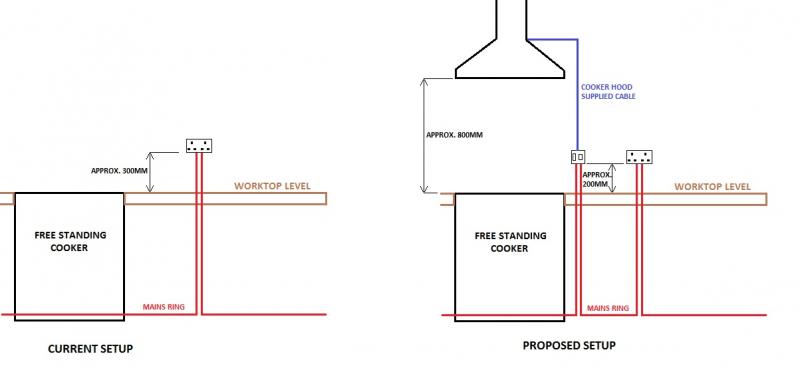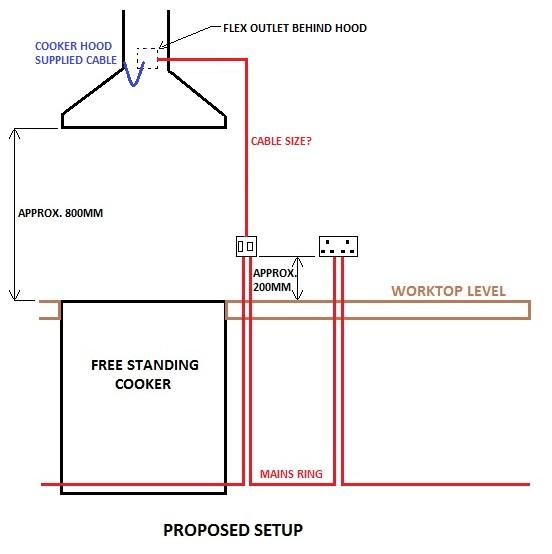- Joined
- 18 Jun 2013
- Messages
- 5
- Reaction score
- 0
- Country

Hi all,
Firstly, I apologise now for the level of detail I'm about to go into, but I really want to make sure I get this right and cover all aspects of the job.
Basically, I'm installing a new cooker hood extractor which will need to be certified but I have heard from at least one electrician saying that they are happy for me to do the bulk of the work to save money and they will come in to 'finish off'. Therefore, for obvious reasons, I want to make sure what I do is top notch and doesn't allow the electrician to try and take me for a ride and claim the work needs to be redone at great cost to me and profit to him!
The attached picture shows the current setup of the relevant part of our kitchen along with the proposed new setup.
The proposed set up involves fitting a fused switch unit (with 3 Amp fuse) in to the mains circuit. I intend to lower the worktop sockets a bit while I'm at it and assume the FCU want's to be at the same level.
My biggest concern is regarding the connection of the cooker hood supplied cable to the FCU. I want to chase this cable into the wall and plaster over, but that would mean fitting the cooker hood before decorating, which I was hoping to avoid. Any ideas?
Think that's it. Any criticisms welcome!
Firstly, I apologise now for the level of detail I'm about to go into, but I really want to make sure I get this right and cover all aspects of the job.
Basically, I'm installing a new cooker hood extractor which will need to be certified but I have heard from at least one electrician saying that they are happy for me to do the bulk of the work to save money and they will come in to 'finish off'. Therefore, for obvious reasons, I want to make sure what I do is top notch and doesn't allow the electrician to try and take me for a ride and claim the work needs to be redone at great cost to me and profit to him!
The attached picture shows the current setup of the relevant part of our kitchen along with the proposed new setup.
My biggest concern is regarding the connection of the cooker hood supplied cable to the FCU. I want to chase this cable into the wall and plaster over, but that would mean fitting the cooker hood before decorating, which I was hoping to avoid. Any ideas?
Think that's it. Any criticisms welcome!



